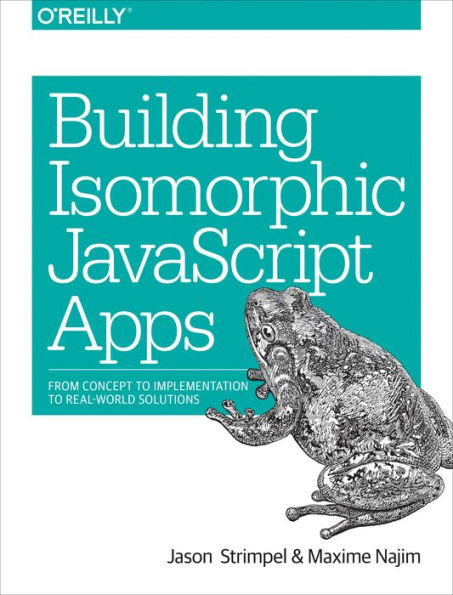Building Isomorphic JavaScript Apps: From Concept to Implementation to Real-World Solutions
Often referred to as the holy grail of web application development, isomorphic JavaScript lets you run the same code on both the browser client and web application server. This hands-on guide shows you a practical approach to building and maintaining your own isomorphic JavaScript apps. You'll learn why this application architecture has become an increasingly popular way to fix business-critical issues such as page-load speeds and SEO compatibility.
1122720627
Isomorphic JavaScript is becoming a real game changer, even for teams used to very different server stacks. Authors Jason Strimpel and Maxime Najim demonstrate why companies including Walmart, Airbnb, Facebook, and Netflix have adopted isomorphic libraries.
- Understand how isomorphic JavaScript can dramatically improve user experience
- Define a contract between the framework and your application for responding to resource requests
- Take framework and application code from server to client to make it an isomorphic codebase
- Create common abstractions, get and set cookies, and redirect user requests
- Learn why isomorphic JavaScript can finally bring a halt to the fat-server, fat-client pendulum
- Learn about advanced isomorphic JavaScript topics like collaborative, real-time applications
Building Isomorphic JavaScript Apps: From Concept to Implementation to Real-World Solutions
Often referred to as the holy grail of web application development, isomorphic JavaScript lets you run the same code on both the browser client and web application server. This hands-on guide shows you a practical approach to building and maintaining your own isomorphic JavaScript apps. You'll learn why this application architecture has become an increasingly popular way to fix business-critical issues such as page-load speeds and SEO compatibility.
Isomorphic JavaScript is becoming a real game changer, even for teams used to very different server stacks. Authors Jason Strimpel and Maxime Najim demonstrate why companies including Walmart, Airbnb, Facebook, and Netflix have adopted isomorphic libraries.
- Understand how isomorphic JavaScript can dramatically improve user experience
- Define a contract between the framework and your application for responding to resource requests
- Take framework and application code from server to client to make it an isomorphic codebase
- Create common abstractions, get and set cookies, and redirect user requests
- Learn why isomorphic JavaScript can finally bring a halt to the fat-server, fat-client pendulum
- Learn about advanced isomorphic JavaScript topics like collaborative, real-time applications
34.99
In Stock
5
1

Building Isomorphic JavaScript Apps: From Concept to Implementation to Real-World Solutions
207
Building Isomorphic JavaScript Apps: From Concept to Implementation to Real-World Solutions
207
34.99
In Stock

Product Details
| ISBN-13: | 9781491932933 |
|---|---|
| Publisher: | O'Reilly Media, Incorporated |
| Publication date: | 09/22/2016 |
| Pages: | 207 |
| Product dimensions: | 6.90(w) x 9.10(h) x 0.60(d) |
About the Author
From the B&N Reads Blog
